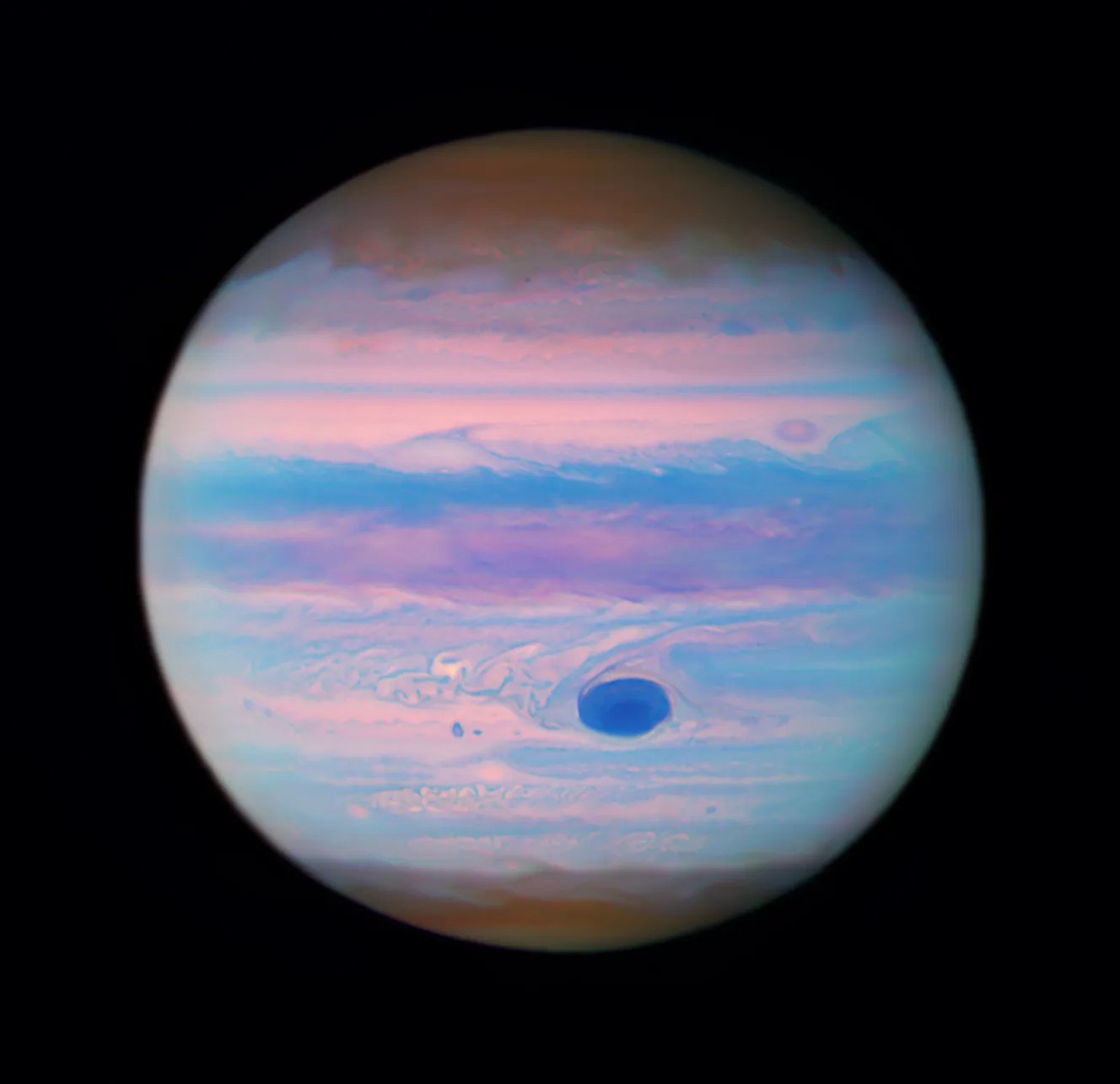NASA’s Juno mission will come closer to Jupiter’s moon Io than any spacecraft has in around 20 years on Saturday (Dec. 30). The flyby will bring Juno to around 930 miles (1,500 kilometers) of Io, the most volcanic body in the solar system. This will allow the spacecraft to take a detailed look at Io as it gathers a treasure trove of hot data. It’s close, but not the closest ever glimpse by a spacecraft: that record belongs to NASA’s Galileo spacecraft, which skimmed just 181 kilometers (112 miles) above Io’s…
Read MoreTag: Jupiter
NASA’s Juno to Get Close Look at Jupiter’s Volcanic Moon Io on Dec. 30
This image revealing the north polar region of the Jovian moon Io was taken on October 15 by NASA’s Juno. Three of the mountain peaks visible in the upper part of image, near the day-night dividing line, were observed here for the first time by the spacecraft’s JunoCam. Image data: NASA/JPL-Caltech/SwRI/MSSS, Image processing by Ted Stryk The orbiter has performed 56 flybys of Jupiter and documented close encounters with three of the gas giant’s four largest moons. NASA’s Juno spacecraft will on Saturday, Dec. 30, make the closest flyby of…
Read MoreEvidence of alien life may exist in the fractures of icy moons around Jupiter and Saturn
Scientists are investigating specific geological features on the largest moons of both Jupiter and Saturn that could be ideal spots for the emergence of life elsewhere in the solar system. The team, led by researchers from the University of Hawaii at Mānoa, looked at what are called “strike-slip faults” on the Jovian moon, Ganymede — the solar system’s largest moon, bigger even than the planet Mercury — and Saturn’s moon, Titan. Faults like these happen when fault walls move past each other horizontally, either to the left or the right,…
Read MoreHubble Provides Unique Ultraviolet View of Jupiter
NASA’s Hubble Space Telescope reveals an ultraviolet view of Jupiter. NASA, ESA, and M. Wong (University of California – Berkeley); Processing: Gladys Kober (NASA/Catholic University of America) This newly released image from the NASA Hubble Space Telescope shows the planet Jupiter in a color composite of ultraviolet wavelengths. Released in honor of Jupiter reaching opposition, which occurs when the planet and the Sun are in opposite sides of the sky, this view of the gas giant planet includes the iconic, massive storm called the “Great Red Spot.” Though the storm appears red…
Read MoreThe moon will match up with Jupiter on Oct. 28
The two most brilliant objects in the night sky will make an eye-catching duo on Saturday (Oct. 28). Looking low to the east-northeast around 7 p.m. local daylight time, you’ll see the Hunter’s full moon of October. Sitting about 4.5 degrees to the lower left of the moon will be the lordly light belonging to the largest planet in our solar system: Jupiter. Your clenched fist held at arm’s length measures roughly 10 degrees, so the moon and Jupiter will be separated by about half a fist.f you stay up…
Read MoreJames Webb Space Telescope spots jet stream on Jupiter stronger than a Category 5 hurricane
Though NASA’s James Webb Space Telescope (JWST) was initially touted as having the power to unveil our universe’s furthest horizons — and it surely has — some of the observatory’s most gorgeous images are actually ones of our very own solar system. With its gold-plated hive of mirrors and backpack of infrared equipment, such as the Near-Infrared Camera (NIRCam), the James Webb Space Telescope has reintroduced us to the stunning place we call home, making us feel like we’re seeing our planetary neighbors for the first time all over again.…
Read MoreJupiter’s volcanic moon Io looks stunning in new Juno probe photos
NASA’s Juno mission has captured stunning new views of Jupiter’s moon Io and its lava-scarred surface. During a recent flyby on Oct. 15, Juno passed near Jupiter’s fifth moon, Io, which is the most volcanically active body in the solar system. The moon’s tortured surface appears tie-dyed with swirls of light and dark spots and large swaths of molten-red patches in new photos shared by NASA on X (formerly Twitter). The volcanic activity on Io has created lakes of molten silicate lava on its surface. Dark, molten-red patches spread across…
Read MoreSee Jupiter meet up with a bright moon in the night sky tonight
Skywatchers who are out during the late evening hours on Sunday will almost certainly be attracted toward the eastern sky, where the two brightest visible objects at that hour will be readily evident. The moon, now a waning gibbous phase, will be poised near a brilliant silvery non-twinkling “star.” That object is not a star, however, but the largest planet in our solar system: Jupiter. Jupiter comes up over the eastern horizon just before 9 p.m. local daylight time. It rises about four minutes earlier each night, so by the end of October…
Read MoreNext stop, Europa? Nano subs to get test beneath Antarctic ice in 2026
Submarines, it turns out, could have a big future in space exploration. The subsurface oceans of the Jupiter moon Europa and Saturn satellite Enceladus are perhaps the most tantalizing places in the solar system in the search for alien life. But these water bodies remain out of reach, hundreds millions of miles away and beneath thick icy crusts. Now, a European collaboration aims to break through some of the technological and physical barriers in the way of future exploration of icy moons and their waters, using Antarctica as a proving…
Read MoreWhy Are Jupiter’s Rings So Thin?
Why does the biggest planet in the solar system have such flimsy rings? New research shows Jupiter’s moons may be to blame. The post Why Are Jupiter's Rings So Thin? appeared first on Sky & Telescope.
Read More